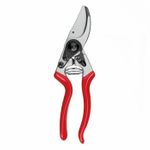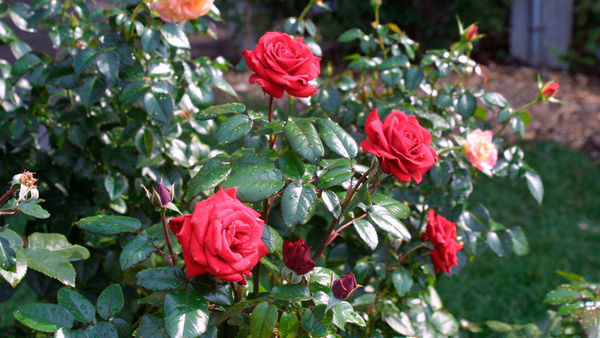
Photo/Illustration: Paul Zimmerman Roses

Photo/Illustration: Paul Zimmerman Roses
Hang around any serious group of rose people long enough and the phrase “five leaflet leaf set” will soon pass their lips. Usually followed by another of those mysterious rose phrases “outward facing bud eye”. This will linger in the air for a while and then be brought into focus when the term “deadheading” enters the fray. At that point the three seemingly unrelated phrases are quickly assembled into a hard and fast rule not to be broken under fear of having one’s secaturs dismantled in a ceremony of shame.
“Always deadhead to a five leaflet leaf set at an outward facing bud eye”
So, does this rule really have to be so hard and fast in your garden? In my opinion: No. As with most rules in rose growing a lot has to do with what you want from your roses. If you exhibit or grow roses for cut flower then this is an excellent rule to follow. A five leaflet leaf set tends to be where the cane is thick enough to support the next long stem bloom that will grow from it. An outward facing bud eye means the next bloom will be some distance from the others on the bush, thereby not damaging the blooms before they are cut for a show or the vase.
For a Garden Rose the rule doesn’t mean much. A garden rose should be covered in blooms in a natural pattern. Therefore I don’t worry much about any formal deadheading rules for my Garden Roses. I simply cut where it seems logical or even just snap them off as I walk by on a summer evening.
Here’s another thing to consider. Five leaflet leaf sets are usually lower down on the stem. With roses the lower down the bud eye is where you cut, the longer it takes to produce the next bloom. For example a bud eye two down from the top might take just a few weeks to produce another bloom. A bud eye five down from the top might take a month or more. If you want your roses to be in steady bloom then cutting closer to the top is what you want.
Lastly, I’m still not sure about the whole five leaflet thing regardless of what you want. When I hold up three, four or five fingers in front of my roses and ask “how many” I have yet to get a response. But, don’t tell the serious rose folks roses can’t count. What will they have to talk about!
Paul
Fine Gardening Recommended Products

Fine Gardening receives a commission for items purchased through links on this site, including Amazon Associates and other affiliate advertising programs.

Fiskars 15" PowerGear Loppers—Sharp Steel Blade Bush and Tree Trimmer
Fine Gardening receives a commission for items purchased through links on this site, including Amazon Associates and other affiliate advertising programs.

Felco Pruning Shears (F 9) - High Performance Swiss Made One-Hand Left-Handed Garden Pruners
Fine Gardening receives a commission for items purchased through links on this site, including Amazon Associates and other affiliate advertising programs.


















Comments
I enjoy reading your articles. They make rose growing seem do-able.
I am not familiar with the term bud eye. What is it?
I really am a newbie!
A bud eye is the small swelling on the cane where the next new cane will come from when you prune. If you follow a set of leaves down to the cane and then removed the leaf set at the cane that is where the bud eye is. It's a small half-circle with some swelling in the center. That swelling is the bud eye.
I have some good photos of them and you've just given me the topic for my next blog post. Thanks!
I enjoyed your realistic comments on caring for roses--also I like to use organic or natural remedies--thank you for the lime/sulphur recipe ---
Delaura. Thank you and I'm glad you are finding the information useful.
Paul
I've always been curious about why my iceburg climbers do not to have clusters of 5 leaves, but of 7. Is this unusual?
phedder. Not particularly unusual. I've seen some roses mostly five and some with mostly seven. And some with a combination.
Log in or create an account to post a comment.
Sign up Log in